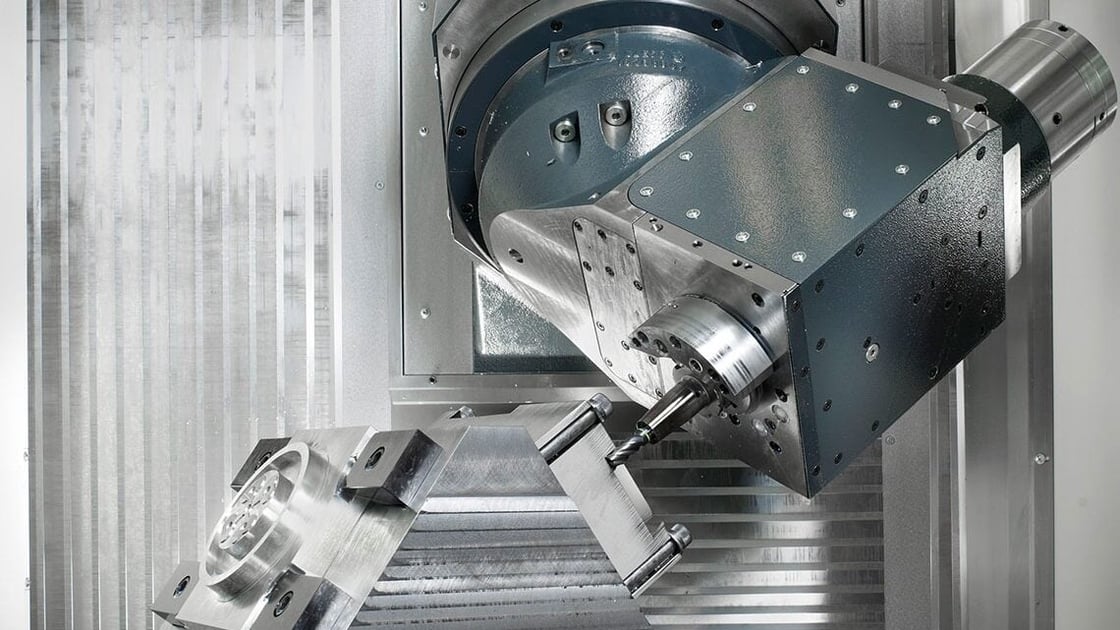Five-axis CNC machining is a high-precision technology that simultaneously operates on X, Y, and Z linear axes and A and B rotational axes, allowing for detailed processing of complex parts. For example, it can achieve aerospace component machining with precision up to 0.001 mm in a single setup.
Technical Principles of Five-Axis CNC Machines
The technology of five-axis CNC machines supports simultaneous precision operations on the workpiece in the X, Y, and Z linear axes and the A and B rotational axes by simultaneously controlling the movement of the workpiece and the tool on five independent axes. For example, the processing of a complex aerospace component may require multi-axis machining at different angles, which a five-axis machine can complete in a single setup.
Traditional three-axis machining centers usually require multiple fixtures and position adjustments when machining complex curved surfaces, while five-axis machines reduce machining time by approximately 40%, reduce operational error rates, and mechanical wear. For instance, in aerospace parts machining, five-axis machines can ensure machining accuracy to 0.001 mm.
The configuration of five-axis machines enhances machining flexibility, allowing for the execution of curved and inclined surface machining. According to industry reports, companies that adopt five-axis machining technology have an average production efficiency increase of over 30% and a reduction of about 20% in material waste.
Five-axis CNC machines can achieve efficient cutting path planning, such as by optimizing the tool entry and exit angles, effectively extending tool life and ensuring the highest quality of the machined surface.

Common Five-Axis Machining Processes
Five-axis CNC machining is used for high-precision processing of complex components, involving continuous five-axis machining, 3+2 axis machine and index fiveaxis processing.
Five-axis machining is a cutting process which enables the tool to move simultaneously on all five axes, allowing for complex shapes with increased efficiency. These machines are proven to be superior in the manufacturing of highly complex geometry parts and topologically optimized parts such as turbine blades or a car model. Five-axis constant machining enables a 30% reduction in machining time.
3+2 machining where a five-axis machine is configured to clamp the workpiece at a certain angle and perform three-axis machining. This method is efficient and the machining accuracy will be even increased up to 0.01 mm, for the large components like aircraft fuselage parts structures.
With index five-axis machining, the machine repositions before each cut but remains stationary while cutting. For instance, companies with indexed five-axis machining may save roughly 20% in total machining time and expense.
Practical applications of these processes include manufacturing complex components for satellites in the aerospace industry or machining engine components in the automotive industry. For example, Tesla extensively uses five-axis machining technology to produce parts for its electric vehicles, achieving faster production cycles and higher quality standards.
How to Choose the Right Five-Axis Machine
Before you chose your five-axis machine, the first thing to examine is the needs of MIPS such as accuracy requirements, size and complexity of a piece. A high-precision 5-axis machine tool for aerospace parts can cost more than 2 million RMB, while an economical five-axis machine is between about 800K to 1.5M RMB
Differences in price are due mainly to the complexity of the design and manufacture, quality of materials used for manufacturing components, degree control system development and installation with additional functions. For instance, a five-axis machine with fast dynamic response and capable of running at higher cutting speeds can be as much more expensive than one without such capabilities – not only because they are generally fitted with newer generation high precision servo motors or advanced bearing systems to enable stable & faster machining performance.
The price is also influenced by the cache of mechanical machining size and load-bearing capacity. Large five-axis machine is the processing diameter size limit and other details need to be some stress and power output axle parts of structure are large compared with small price.
For example, when choosing a five-axis machine ensure that manufacturers provide full training for operators and maintenance of the equipment as well any technical assistance. For instance, the Germany and Japan with superior after-sales service quality, machine quality but comparatively more expensive;
For companies investing in a five-axis machine for the first time, it is recommended to conduct market research, compare the cost-performance ratios of different brands and models, and consider leasing or purchasing second-hand equipment as a start to reduce investment risk.








